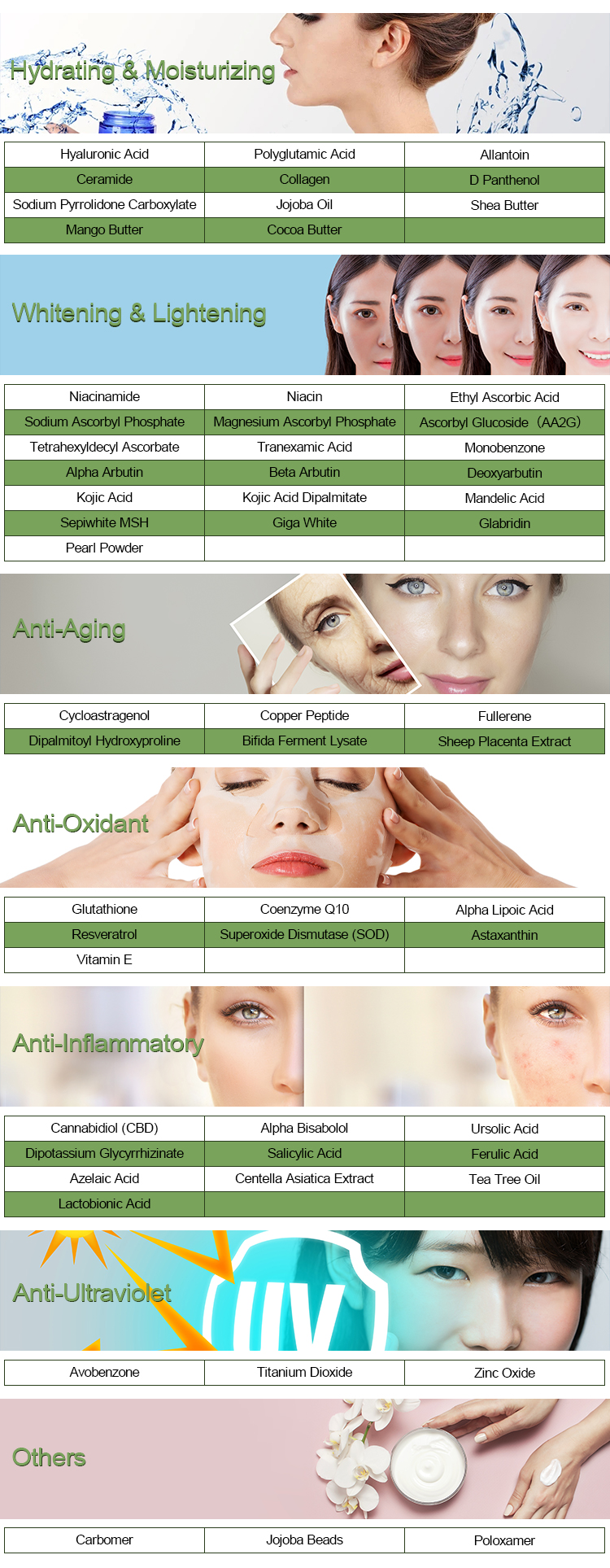Copper peptide is a type of compound that combine copper ions with small protein fragments called peptides. They have gained attention in the skincare and wound healing industries due to their potential benefits for promoting collagen synthesis, reducing inflammation, and enhancing tissue repair. Here’s an overview of the materials and methods commonly associated with copper peptides:
Materials of Copper Peptide:
- Copper Peptide Compound: This is the core material, composed of a copper ion bound to a peptide sequence. The specific peptide sequence can vary, but common ones include GHK-Cu (glycyl-histidyl-lysine-copper) and AHK-Cu (ala-histidyl-lysine-copper).
- Solvent: The copper peptide compound is often dissolved in a suitable solvent to create a solution that can be applied to the skin or used in various formulations. Common solvents include water, glycerin, or specialized carrier solutions designed for skincare products.
- Formulation Ingredients: If the copper peptide is being used in a skincare product, additional ingredients like moisturizers, emollients, stabilizers, and preservatives might be added to create a functional and stable product.
Methods of Copper Peptide:
- Synthesis of Copper Peptides: Copper peptides are typically synthesized through chemical reactions that involve coupling a copper ion with a peptide sequence. The specific synthesis method can vary based on the peptide sequence and the desired end product. Peptides can be synthesized through solid-phase peptide synthesis (SPPS) and then combined with copper ions.
- Incorporation into Skincare Products: Copper peptides can be incorporated into various skincare products, such as serums, creams, and lotions. This involves mixing the copper peptide compound with other formulation ingredients to create a stable and effective product. The concentration of copper peptide in the final product will vary depending on the intended use and desired effects.
- Application: Skincare products containing copper peptides are applied topically to the skin. Users typically follow the recommended application instructions provided by the manufacturer or skincare professionals.

- Wound Healing: In wound healing applications, copper peptides can be applied directly to wounds or incorporated into wound dressings to promote tissue repair. The copper peptides are thought to enhance collagen synthesis, which plays a critical role in wound healing.
- Clinical Studies: The efficacy and safety of copper peptides are often evaluated through clinical studies. These studies involve applying the copper peptide-containing products to human subjects and assessing various parameters, such as skin texture, wrinkle reduction, and wound healing progress.
- Patch Testing: Before applying copper peptides or products containing them to a larger area of skin, it’s common to perform patch testing on a small area of skin to check for adverse reactions or allergies.
It’s important to note that while copper peptides have shown promising effects in some studies, the extent of their benefits and the optimal application methods can vary among individuals. Consulting with a dermatologist or skincare professional is recommended before incorporating copper peptide-containing products into your skincare routine.
